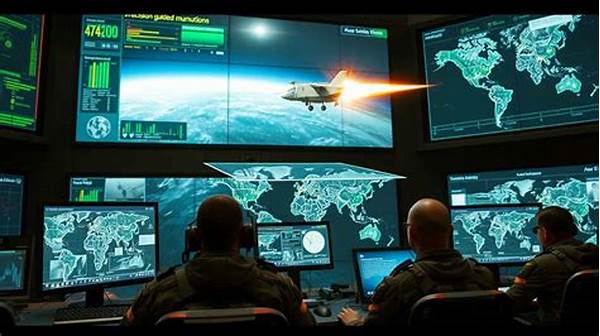The complexities of modern warfare magnify the imperative of minimizing harm to civilian populations. As conflicts proliferate, the need for effective strategies and mechanisms to protect non-combatants has become paramount. Recognizing the human cost of military engagements, stakeholders are increasingly emphasizing civilian harm mitigation in warfare either through policy integration or operational adaptation.
The Importance of Civilian Harm Mitigation
Civilian harm mitigation in warfare is crucial in modern conflict settings where distinguishing between combatants and non-combatants is often challenging. This challenge is exacerbated by urban warfare, where military operations occur in densely populated areas. Not only does civilian harm mitigation uphold international humanitarian law, but it also supports the integrity and legitimacy of military operations. The inadvertent loss of civilian lives can escalate conflicts, damage diplomatic relations, and undermine the political objectives of military interventions. Therefore, prioritizing civilian harm mitigation in warfare is not just an ethical imperative but also strategically advantageous for peace and security.
Strategies for civilian harm mitigation might include training armed forces in distinguishing non-combatants, employing precision-targeted technology, and establishing no-strike lists for protected sites. Moreover, these strategies are supplemented by post-engagement assessments to continuously refine approaches to minimizing harm. Ensuring compliance with legal frameworks such as the Geneva Conventions further fortifies these efforts. By integrating these elements into military doctrine, civilian harm mitigation in warfare can become a standardized component of operational planning, thus reducing the humanitarian toll of armed conflicts.
Key Mechanisms in Mitigating Civilian Harm
1. Precision Targeting: Utilizing advanced technology for precision targeting is central to civilian harm mitigation in warfare, ensuring military objectives are achieved with minimal collateral damage.
2. Legal Frameworks: Adherence to international humanitarian law and similar protocols play a pivotal role in civilian harm mitigation in warfare, setting clear guidelines for permissible conduct in armed conflicts.
3. Training and Doctrine: Continuous education and the integration of civilian protection measures into military doctrine contribute significantly to effective civilian harm mitigation in warfare.
4. Risk Assessment: Comprehensive risk assessments preceding military operations facilitate civilian harm mitigation in warfare by predicting potential non-combatant impacts.
5. After-Action Reviews: Conducting thorough after-action reviews ensures lessons learned are incorporated into future strategies, promoting ongoing civilian harm mitigation in warfare.
Challenges in Implementing Mitigation Strategies
While substantial progress has been made towards civilian harm mitigation in warfare, several challenges persist. One key challenge is the increasingly asymmetrical nature of warfare, where non-state actors may deliberately operate from civilian areas, complicating military responses. Additionally, there’s the issue of technological disparities among military forces, where not all armies possess the capability for precision targeting equipment or advanced surveillance methods. This technology gap can lead to increased collateral damage in less equipped forces.
Furthermore, there is often a lack of accountability mechanisms to address failures in civilian harm mitigation. Ensuring transparency and impartial review processes are essential to foster trust in military operations. These challenges call for a concerted international effort to standardize practices and share technological advancements. Only through collective action and shared responsibility can the global community enhance civilian harm mitigation in warfare effectively.
Technological Advances and Their Role
Technological innovations play a crucial role in enhancing civilian harm mitigation in warfare. Modern technologies, ranging from drones to advanced surveillance systems, allow for more accurate targeting, thus minimizing unintended casualties. These innovations improve situational awareness and enable military forces to execute missions in a manner that prioritizes civilian safety.
Additionally, technologies such as facial recognition and biometrics are increasingly employed to differentiate between combatants and civilians. However, reliance on technology also presents new ethical and operational challenges, necessitating robust regulations to ensure these tools are used appropriately and responsibly. As technology evolves, constant evaluation and adaptation are required to ensure they adequately support civilian harm mitigation in warfare.
Advocacy and Collaborative Efforts
The role of advocacy and international collaboration in promoting civilian harm mitigation in warfare cannot be overstated. Non-governmental organizations, alongside state actors, play a vital role in highlighting issues, pushing for policy changes, and offering field-based solutions to protect civilians. These entities work tirelessly to ensure accountability in military operations and foster the exchange of best practices globally.
Furthermore, international coalitions can facilitate capacity-building initiatives, offer technical training, and provide resources to forces lacking sophisticated mitigation capabilities. Through partnerships and advocacy, the global community can advance toward a future where civilian harm mitigation in warfare is not just aspirational but a tangible reality.
Ethical Implications
Taking ethical considerations into account within the framework of civilian harm mitigation in warfare is vital. The ethical dimension underscores the moral responsibility of military forces to minimize civilian casualties and uphold human rights standards. Decision-makers must balance military necessity with humanitarian concerns to ensure that operations do not disregard the value of civilian life.
Policies that prioritize civilian safety reflect the ethical commitment of states to conduct warfare in a manner consistent with international standards. This commitment is also reflected in the calls for transparency and accountability, ensuring that any harm inflicted is investigated and addressed. By emphasizing ethical responsibility, stakeholders can strengthen trust and facilitate more humane conduct in warfare.
Conclusion
In conclusion, civilian harm mitigation in warfare remains a multifaceted endeavor requiring a combination of ethical, legal, and technological strategies. The commitment to reducing civilian casualties not only fulfills international humanitarian obligations but also serves the strategic interests of involved parties. By leveraging advancements in technology, enhancing legal frameworks, and fostering international collaboration, stakeholders can significantly reduce the humanitarian impact of armed conflicts. As global leaders continue to engage in conflict resolution, prioritizing civilian harm mitigation in warfare is imperative to ensuring sustainable peace and security.





